Owls of South Africa
Few African birds of prey hold the same mystical appeal as owls. There are 12 owl species in Southern Africa ranging from the largest owl in Africa (the Verreaux’s Eagle Owl) to some very tiny cute owls (like the African Scops and the Pearl-Spotted Owlet.)
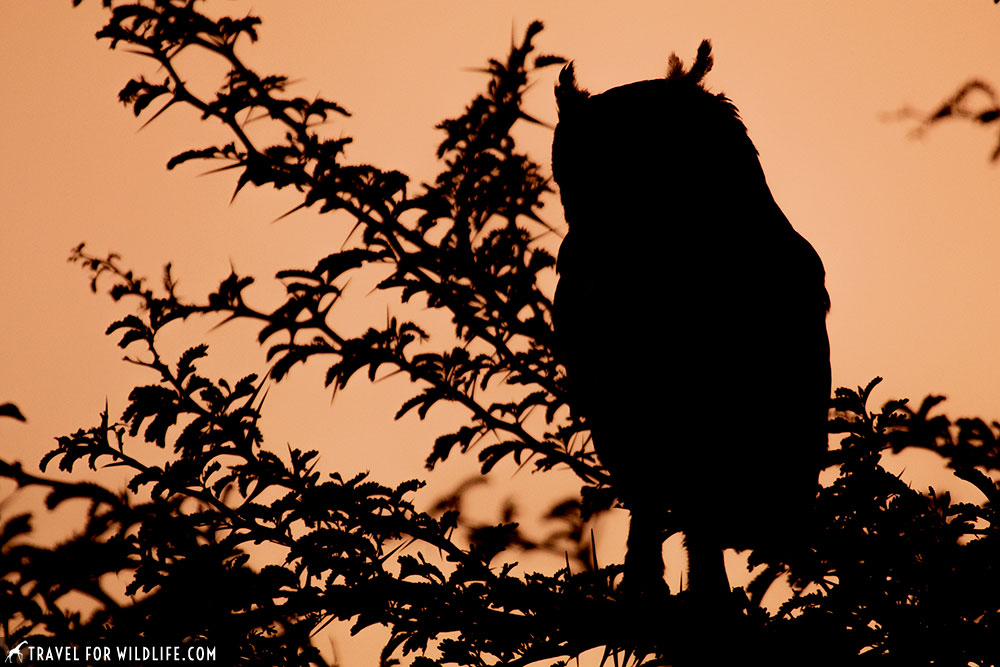
Of all the owl breeds in the world, I find that South African owls are some of the easiest to see. During our travels we’ve managed to see 7 of the 12 kinds of owls found in Southern Africa, most of them in daylight! For the species we haven’t managed to photograph, I’ve inserted a youtube video of the species. Hopefully we will fill in some more photos of owls of South Africa in our future visits!
Where to See South African Owls
This article includes all owl species found in Southern Africa, including Namibia, Botswana, southern Mozambique, South Africa, Eswatini, and Lesotho. As the largest land mass in the region, it’s not surprising that every one of these owl species can be found in the country of South Africa. It is the primary tourist hub of the region, so if you’re in search owls, it’s a great place to start. See the individual owl range map for each species below for more information. (All range map data acquired from the IUCN Red List)
I also like to search owl species names on the eBird website where people log their own sightings. It’s a great way to figure out where other people have spotted the species. You can also record your own sightings there!
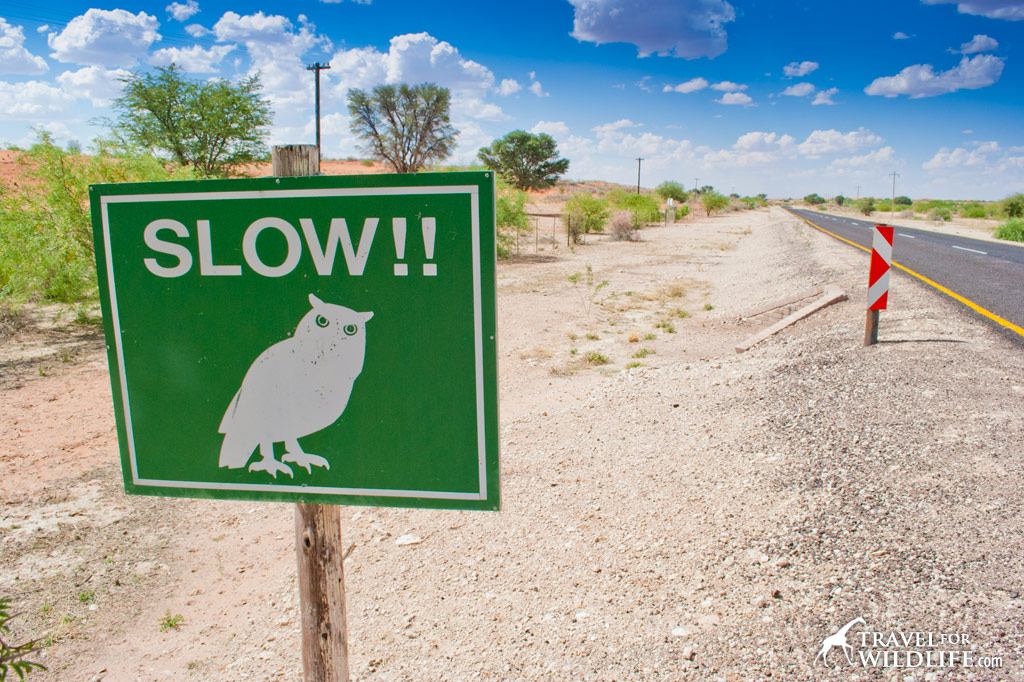
Our favorite place to see African birds of prey is the Kgalagadi Transfrontier Park, spanning parts of South Africa and Botswana, and bordering Namibia. Most of the owl pictures in this post were taken there. We see eagles, hawks, falcons, and owls there all day long!
A few of our owl images were taken in Kruger National Park which is also in South Africa. This is a great place for eastern species like the elusive Pel’s Fishing Owl or the African Grass Owl. Do owls migrate? Like most owls (except ones that live in extremely cold climates) African owls do not migrate. While they may fly long distances in search of food, they tend to live in the same region year round.
*This article may contain affiliate links. We receive a small commission at no extra cost to you.*
If you are looking for a South African bird guide, we recommend the Roberts Bird Guide.
South African Owl Species
1) Verreaux’s Eagle Owl (Giant Eagle Owl): the biggest owl in Africa
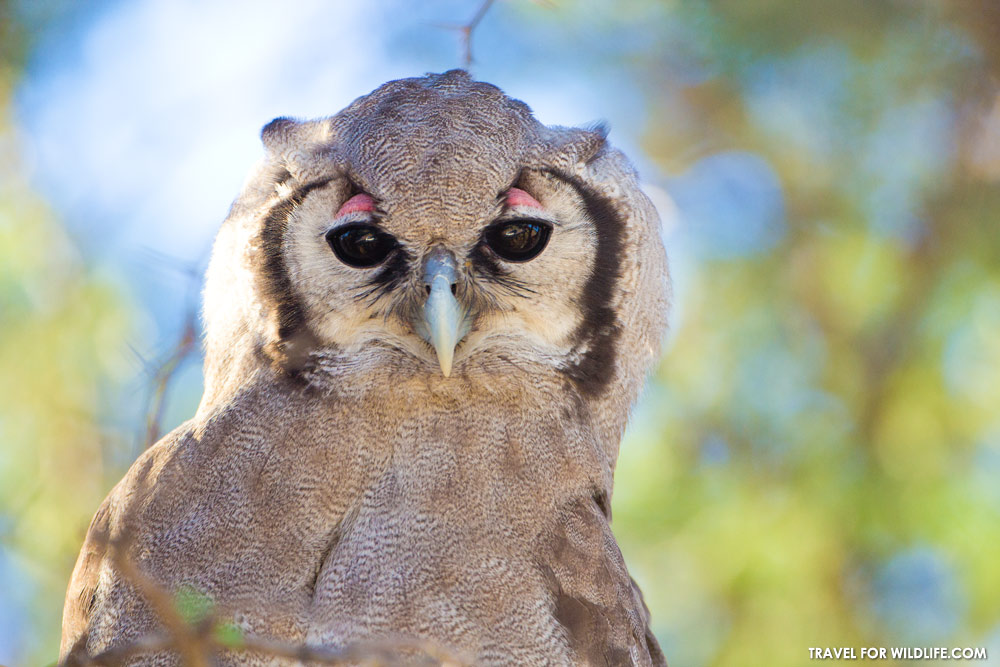
The Giant Eagle Owl lives up to its name. It’s huge! In fact, it’s the largest owl in Africa. Also known as the Verreaux’s Eagle Owl (Bubo lacteus), this predatory bird is unmistakable thanks to its pink eyelids!
We see these regularly in the Kgalagadi Transfrontier Park in South Africa, perched in large camelthorn trees along the riverbeds. We’ve also watched them hunting bats next to the chalets in Twee Rivieren rest camp (see more pics in our Twee Rivieren post), and perched right above our heads on the balcony at Urikaruus, our favorite wilderness lodge in the Kalahari. The two calls we’ve heard are a long, soft, raspy whine, and a series of deep grunts like the sound of a tuba (hence our nickname for them “Mr. Tuba”.)
Being the biggest owl has its advantages. It can hunt prey as large as young warthogs! If you look at the photo below you’ll see a Verreaux’s Eagle Owl proving one of the fun facts about owls: they can turn their heads all the way around backwards!
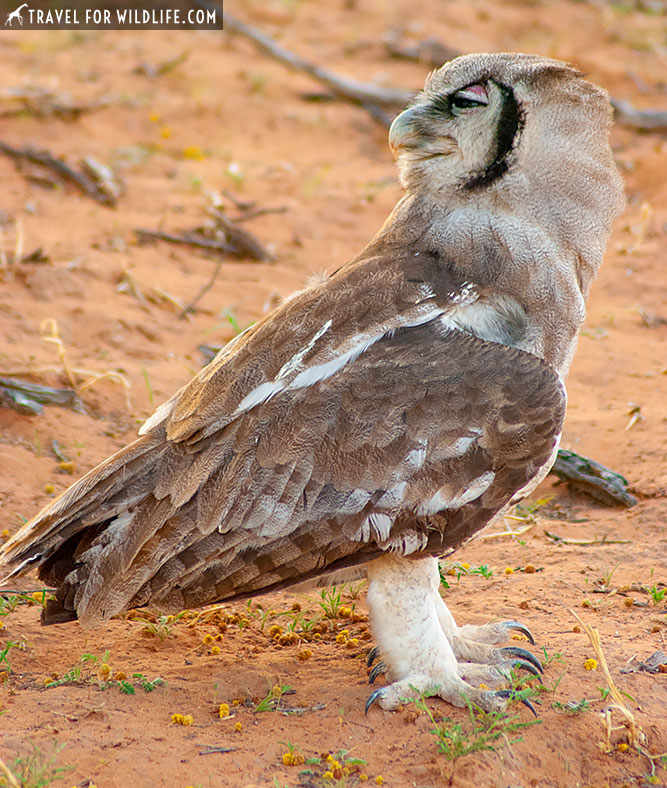
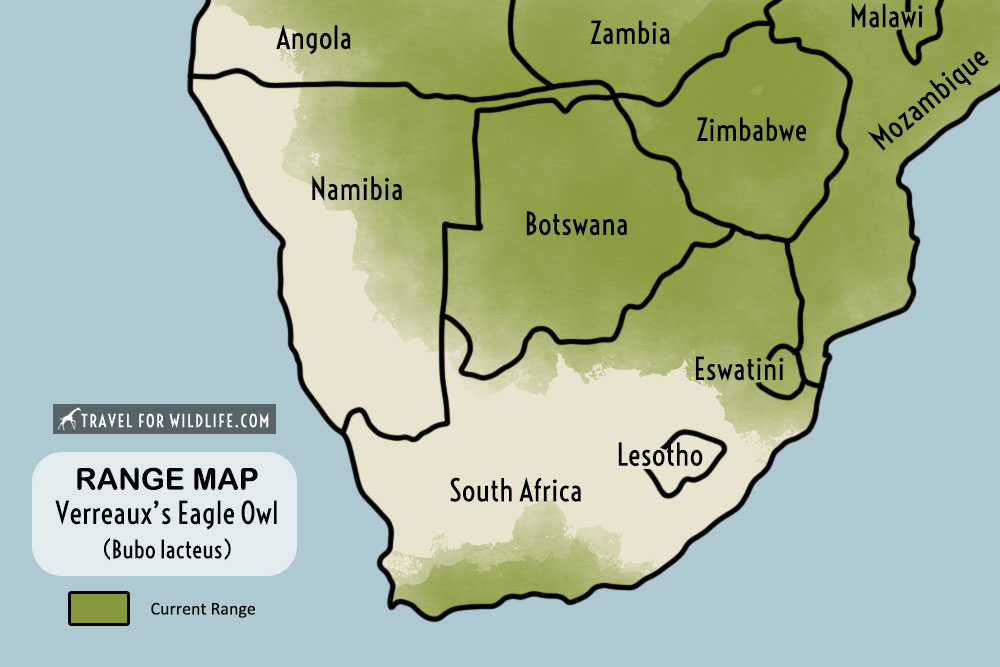
2) Pel’s Fishing Owl: an unusual owl diet
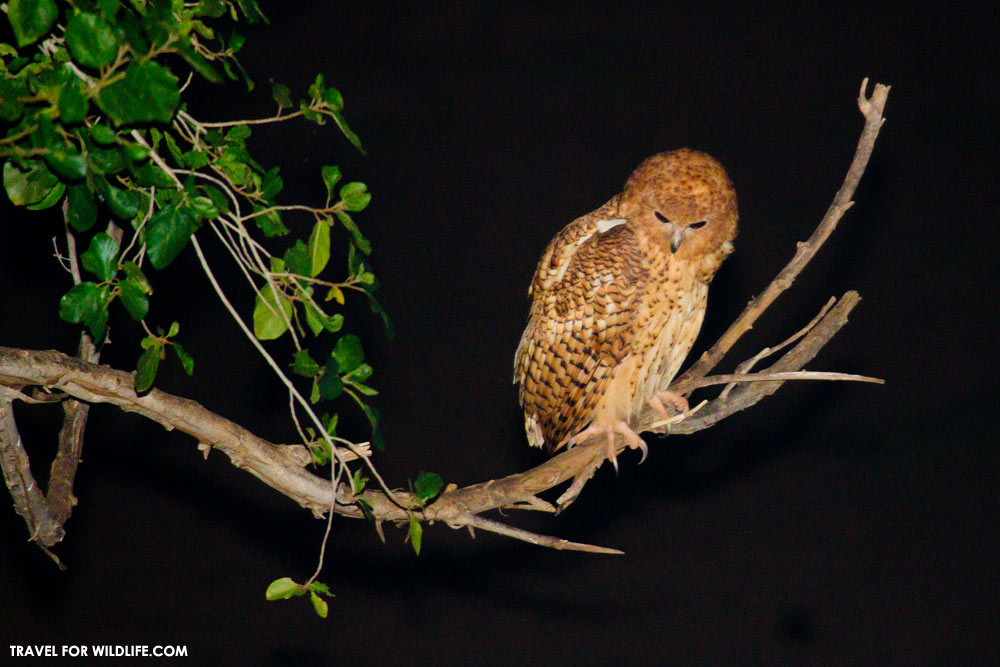
The Pel’s Fishing Owl (Scotopelia peli) is the second largest owl in southern Africa. While the usual owl diet consists of small mammals, and occasional birds, reptiles and insects; the Pel’s is the only South African owl species that lives almost exclusively on fish!
The IUCN redlist lists this owl as “least concern” but it is still incredibly rare to see. In fact many birders consider it the holy grail of birding and it makes many lists of “top ten birds to see before I die” lists (according to Okavango Delta Birding). We were lucky enough to spot one fishing over a river in Kruger National Park while staying at the Outpost Lodge.
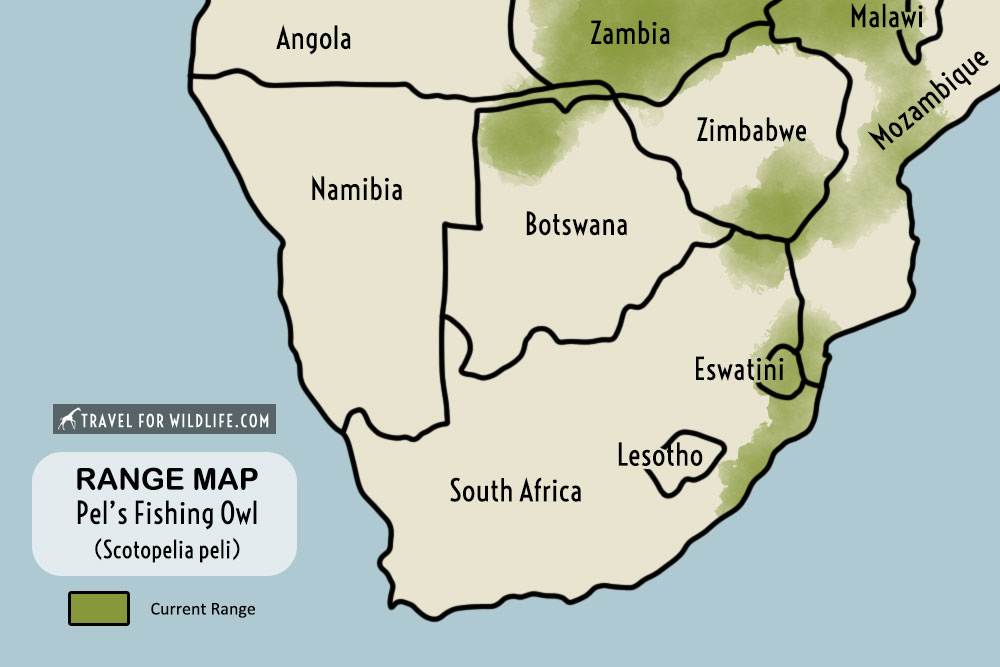
3) Spotted Eagle-owl: any owl habitat will do!
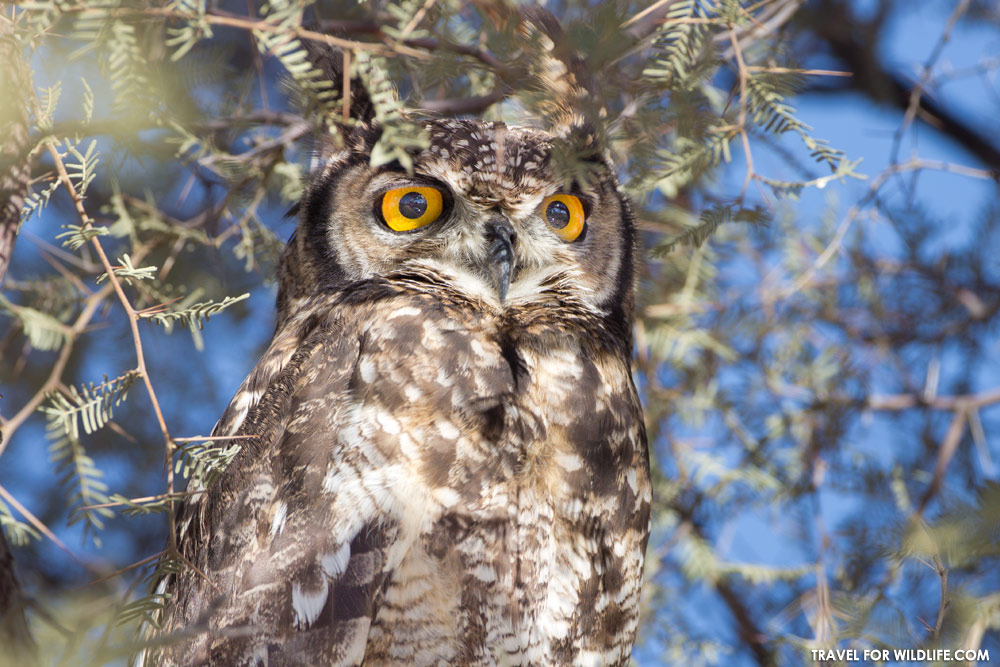
The Spotted Eagle Owl (Bubo africanus) is the most widely distributed owl in Southern Africa and can be found across the entire region. From forest to savanna to desert, and even in suburbia, it’s all good owl habitat to the Spotted Eagle Owl.
We see these frequently on night drives in the Kgalagadi Transfrontier Park (and sometimes during the day.) There is a rare rufous form of the Spotted Eagle Owl that looks very similar to the Cape Eagle Owl (below). But the usual grey form is easy to distinguish by its yellow eyes. (They Cape Eagle Owl has orange eyes.)
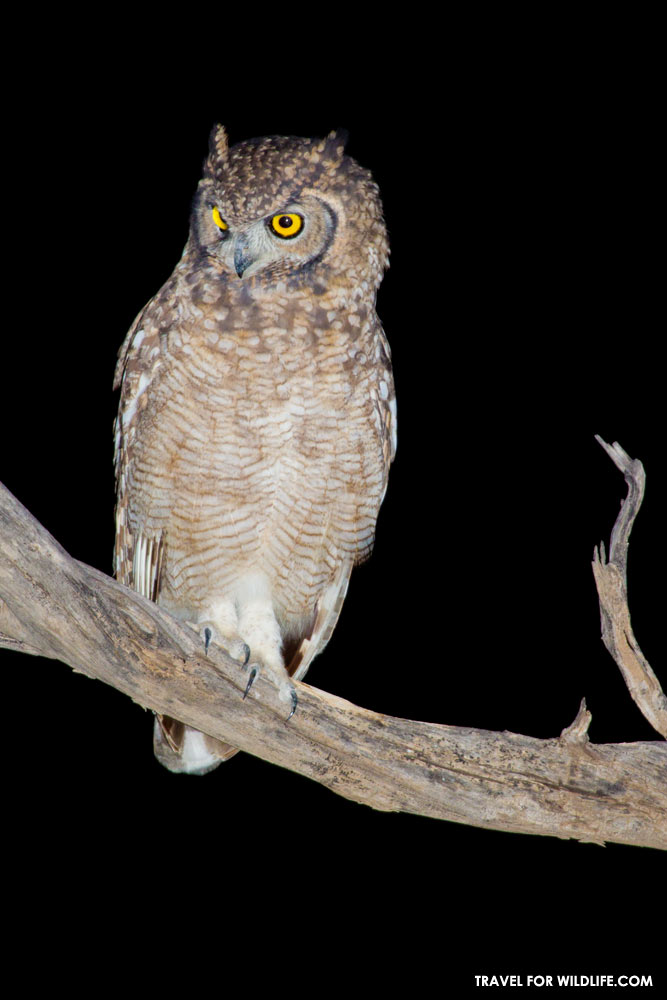
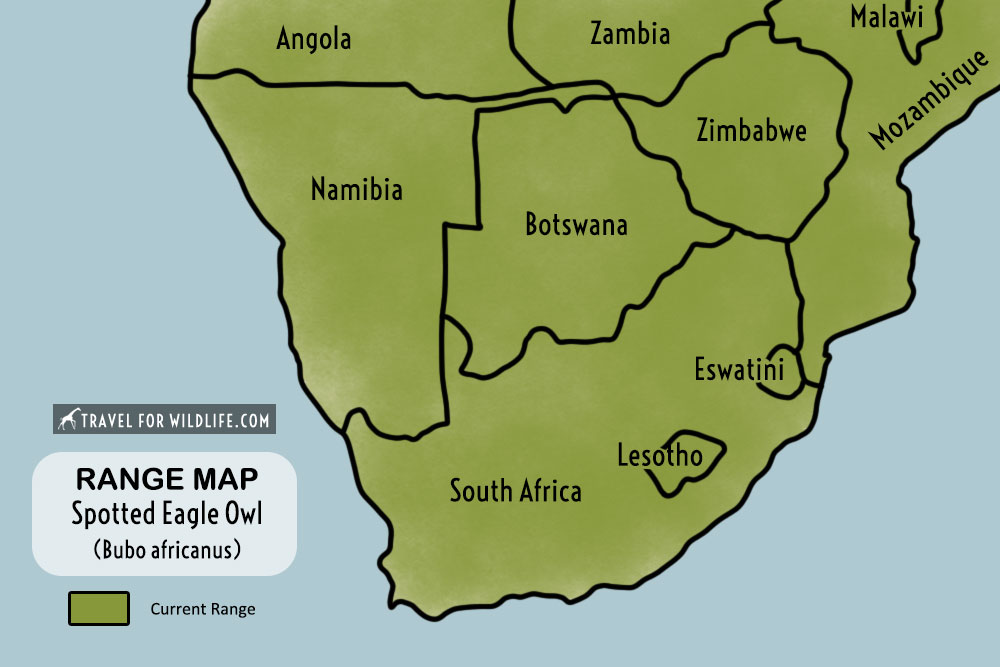
4) Cape Eagle-owl
The Cape Eagle Owl (Bubo capensis) looks very similar to the Spotted Eagle Owl (above) but is far less common. It is slightly larger than the Spotted Eagle Owl, has orange eyes (the Spotted has yellow eyes), and blotchy underparts (the Spotted has fine barring underneath.) This eagle owl prefers mountainous and rocky terrain.
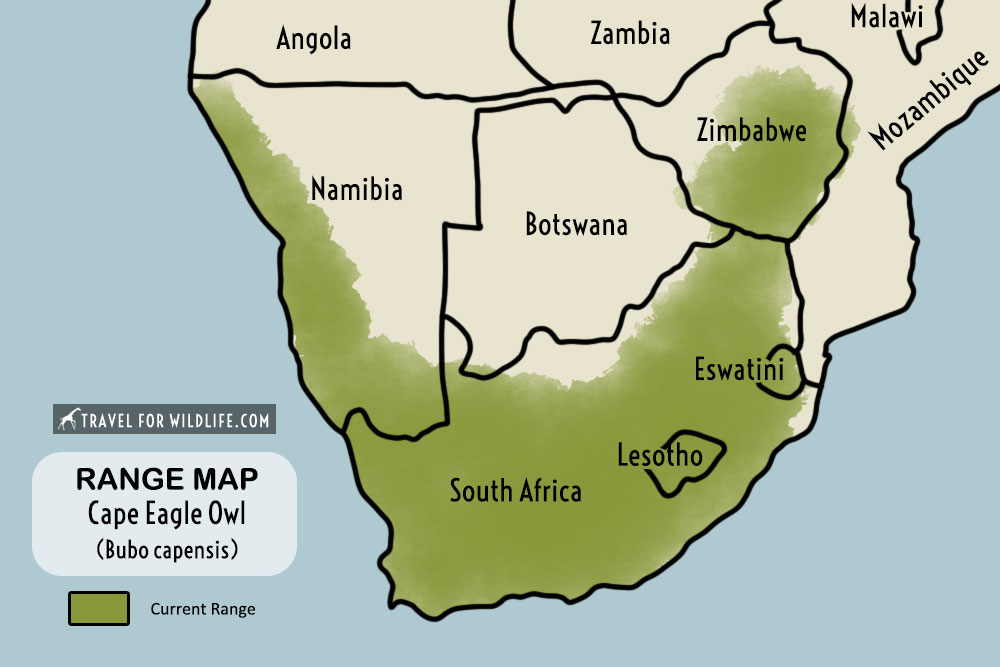
5) Barn Owl: do you have an owl’s nest in your house?
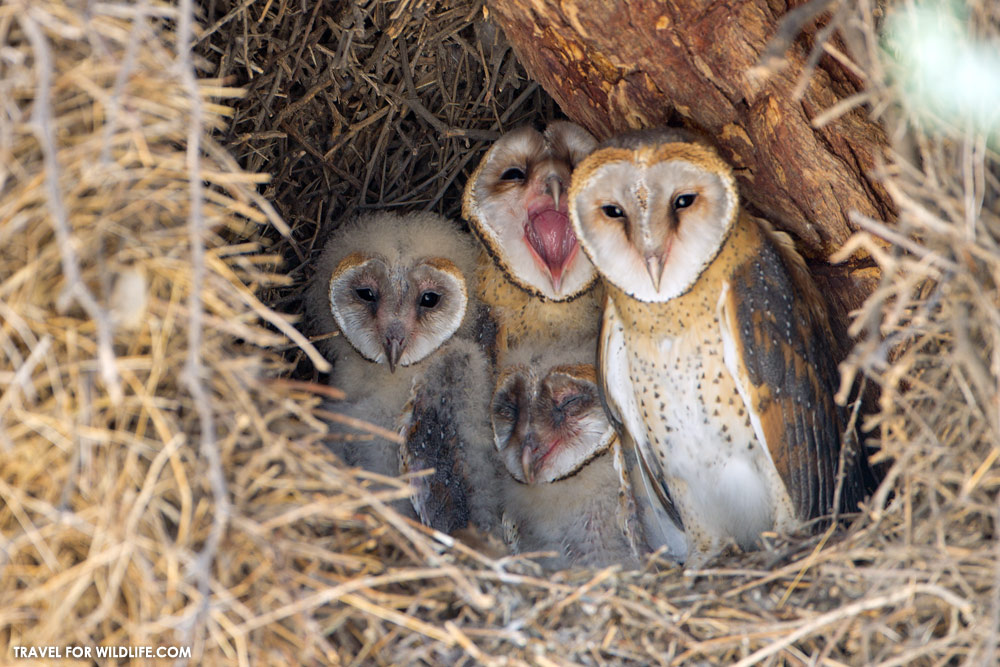
If you find nesting owls in your house or your barn, chances are it’s a Barn Owl (Tyto alba). They earned the name thanks to their propensity to nest in human structures.
The typical Barn Owl lifespan in the wild is 4 years but one captive Barn Owl in the UK lived to be 15 years old! The Common Barn Owl has a nearly worldwide distribution and this is the same species of Barn Owl that lives in the United States. We see Barn Owls regularly in the Kgalagadi Transfrontier Park. The family in the owls nest photo above was living inside an abandoned Sociable Weaver nest.
The one below is perched above our tent at the Kalahari Tented Camp. We’ve also seen one nesting in a palm tree right next to reception at the Kalahari Anib Lodge in Namibia. Our most memorable sighting was a lone Barn Owl swooping like a silent ghost around our vehicle in crazy thunderstorm during a night drive in the Kgalagadi. It was magical!
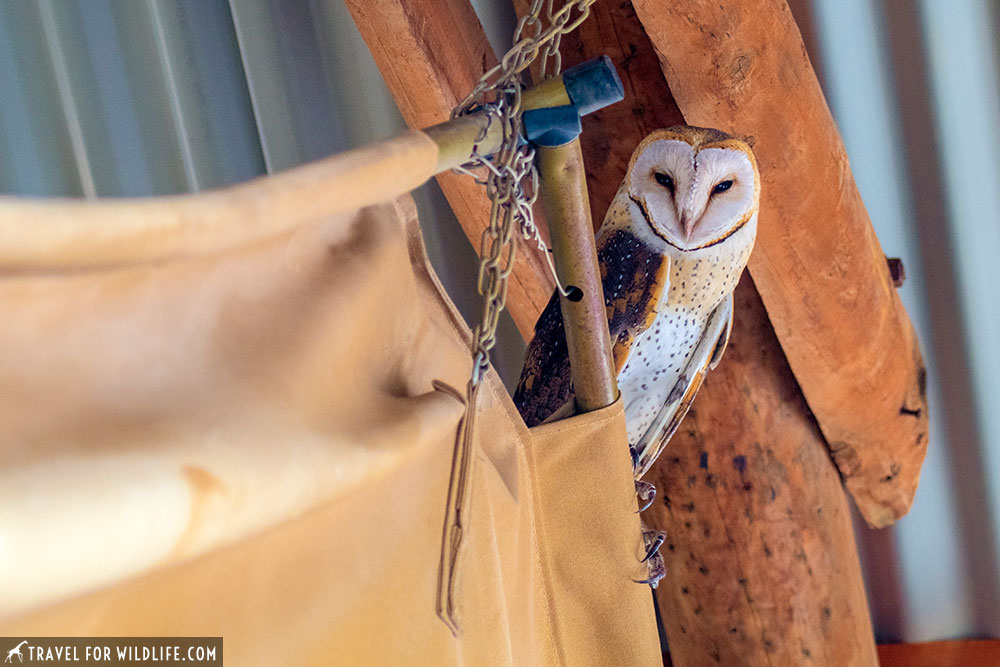
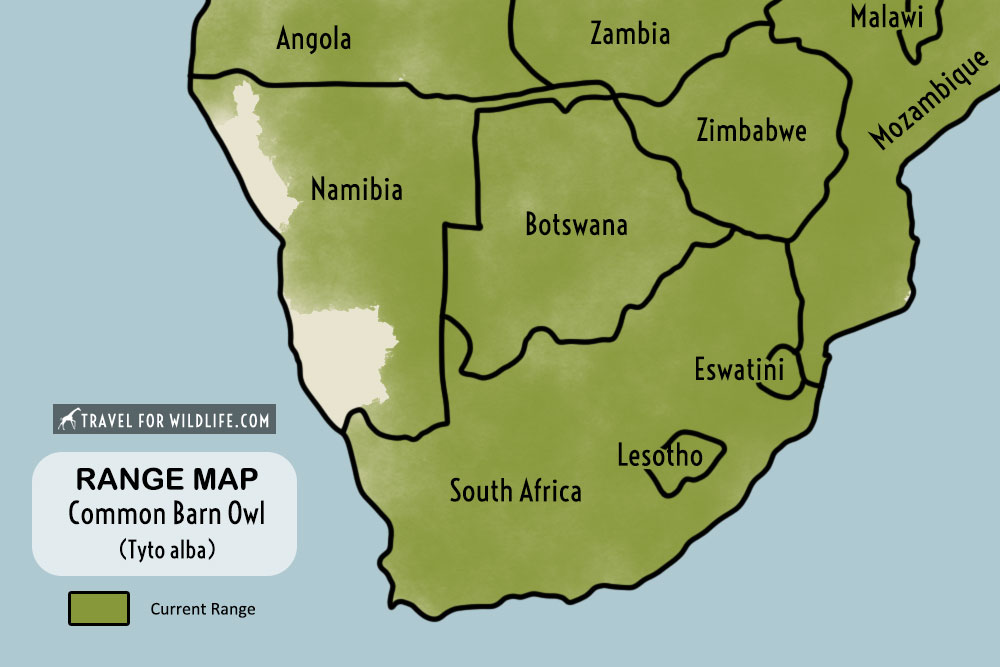
6) African Grass-owl: a ground nester!
The African Grass Owl (Tyto capensis) looks very similar to the more common Barn Owl but has dark brown wings and back. Its preferred habitat is tall, undisturbed grasslands in wetlands and marshes, much like the Marsh Owl below. In fact, it nests on the ground in long grass!
Because it is a habitat specialist it is considered vulnerable in many areas due to habitat loss. We’ve never laid eyes on one personally but if you want a good chance of seeing one, check out this birding tour from Birding Ecotours. According to one study, both the African Grass Owl and the Barn Owl show pronounced sexual dimorphism (meaning a difference between the sexes) with the females being significantly larger than males! Check out more info about the African Grass-owl.
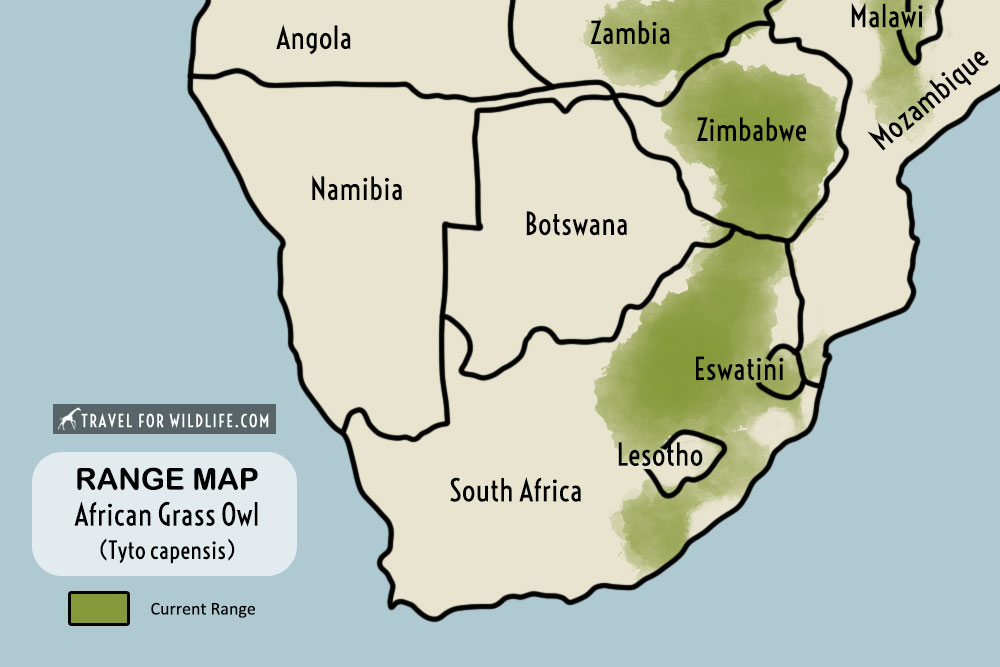
7) African Wood-owl: dweller of the forest
The African Wood-owl (Strix woodfordii) is closely related to our Barred Owl of North America. It has no ear tufts and a heavily barred breast. A strict forest dweller, it is found only along the eastern edges of South Africa and along the southern coast. We haven’t seen one yet, but riverine forests in Kruger National Park seem like a good place to search!
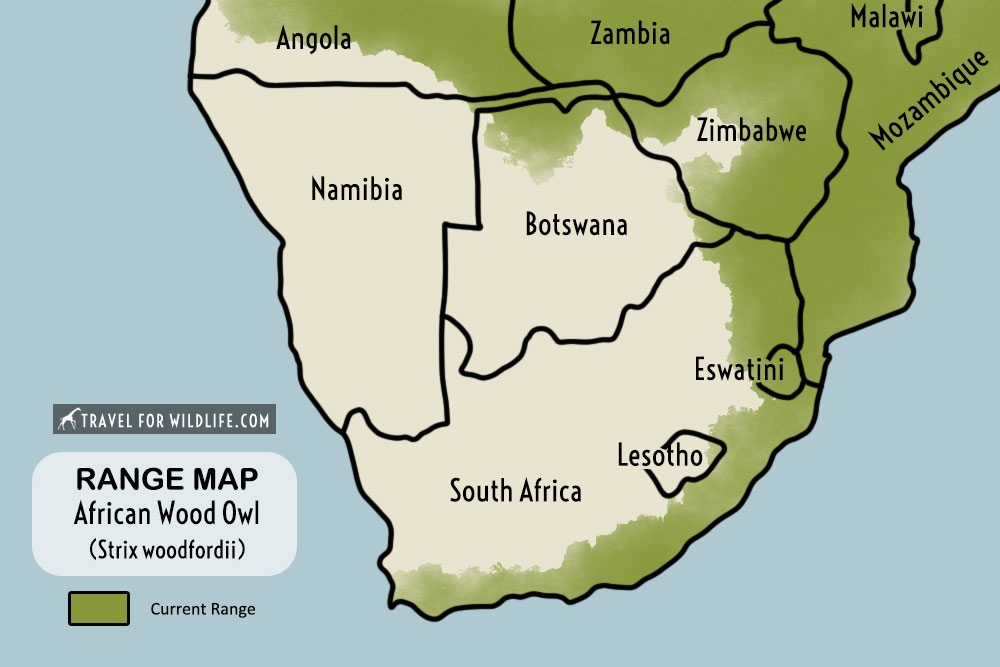
8) Marsh Owl: please don’t drain the wetlands!
The Marsh Owl (Asio capensis) is, in my opinion, a strange-looking owl with its dark eye sockets and funny little ear tufts near the center of the head. As the name implies, its preferred habitat is wetlands and moist grasslands which are disappearing rapidly in South Africa.
Its rasping call is said to sound like the tearing of fabric. Of the thousand sightings of Marsh Owls reported on E-bird, most have been around the Johannesburg and Pretoria region (where the most people are) but Kruger and KwaZulu Natal also look like good regions to search for these specialized owls of Africa.
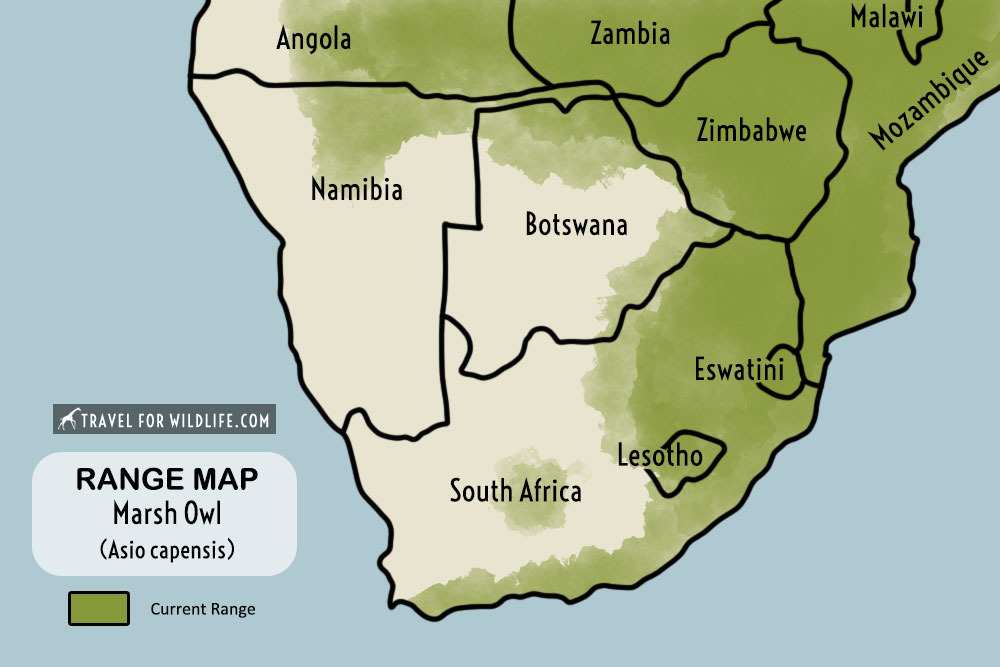
9) Southern White-faced Owl: winner of the cute owls award?
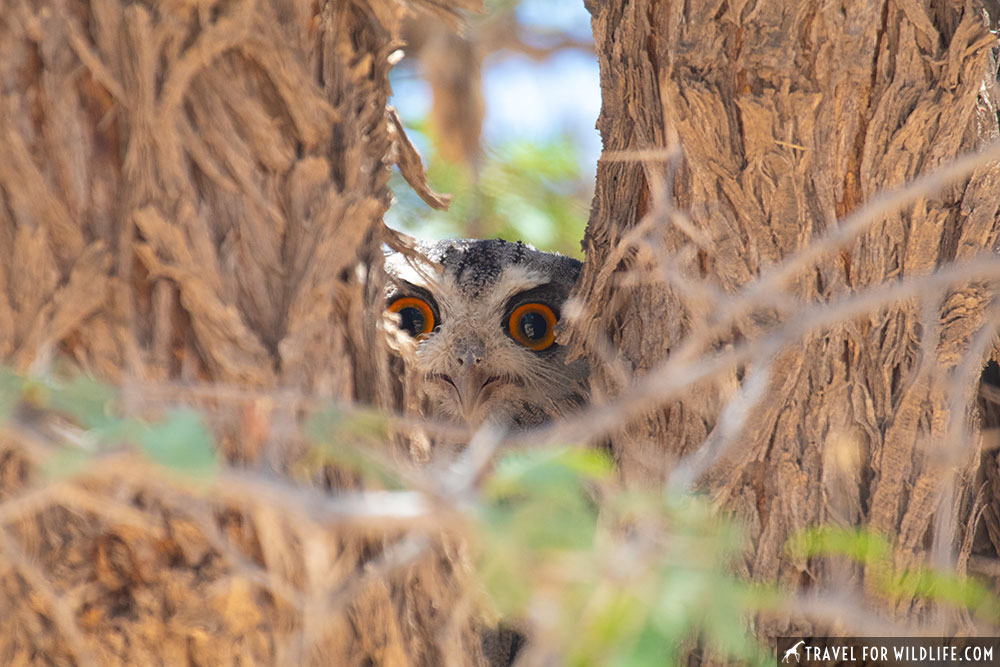
The Southern White-faced Owl (Ptilopsis granti) definitely makes our list of cute owls thanks to those stunning orange eyes and bright white facial disk. It was formerly known as the Southern White-faced Scops-owl but it is not a true scops owl like the African Scops-owl at the end of this list. We spotted this one perched head-high in an acacia tree right outside the swimming pool at the Mata Mata rest camp in the Kgalagadi Transfrontier Park.
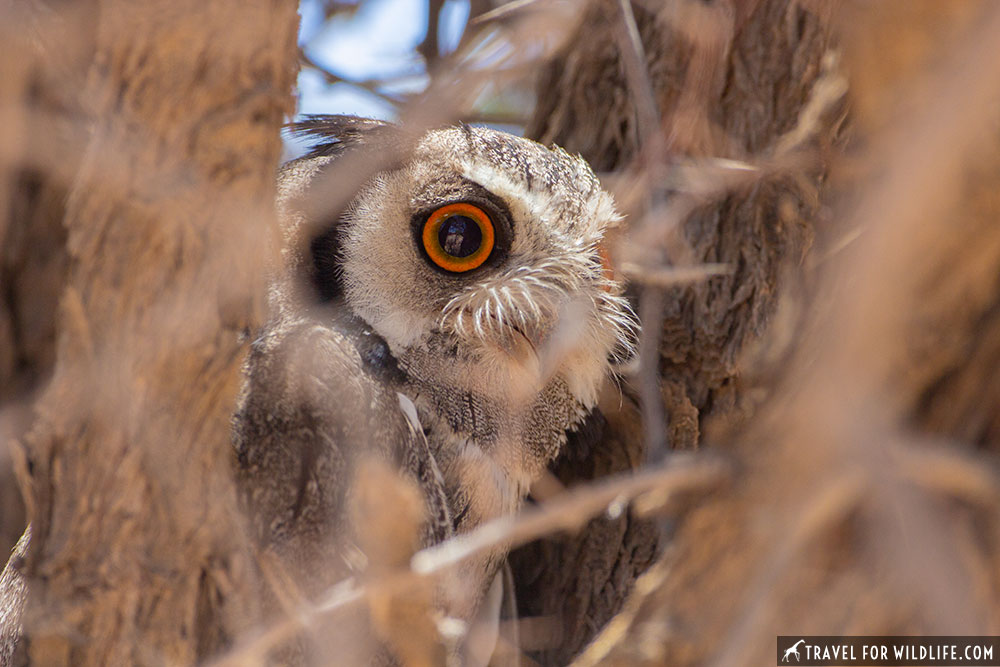
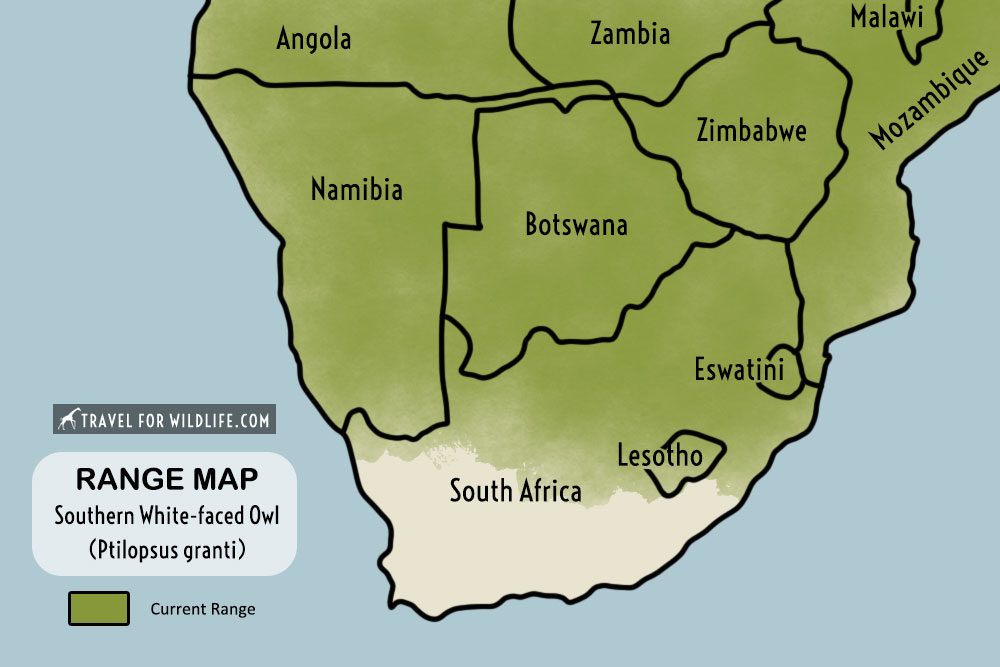
10) African Barred Owlet
The tiny African Barred Owlet (Glaucidium capense) looks quite similar to the closely related Pearl-spotted Owlet (below). But the name will give you a clue how to tell them apart. Look for fine barring on the head, back, and tail, instead of the spots found on the Pearl-spotted Owlet.
This African raptor is only found in the extreme northeast corner of South Africa and in countries farther north. We haven’t spotted one yet but Kruger National Park seems like the best place to find one in South Africa. Northern Botswana also looks like a good hotspot for African Barred Owlets.
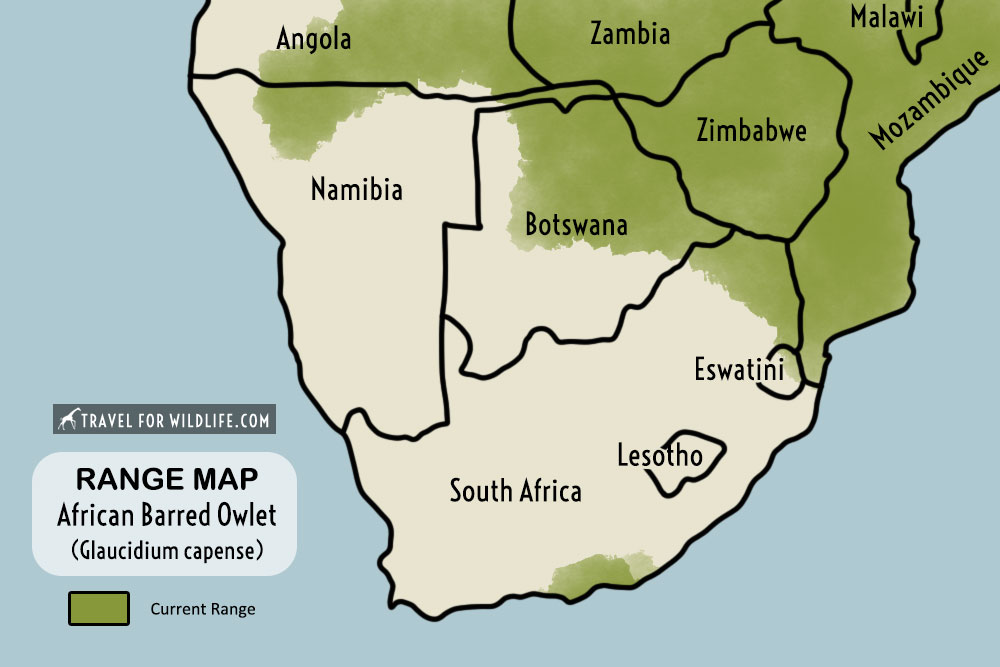
11) Pearl-spotted Owlet: eyes on the back of it’s head!
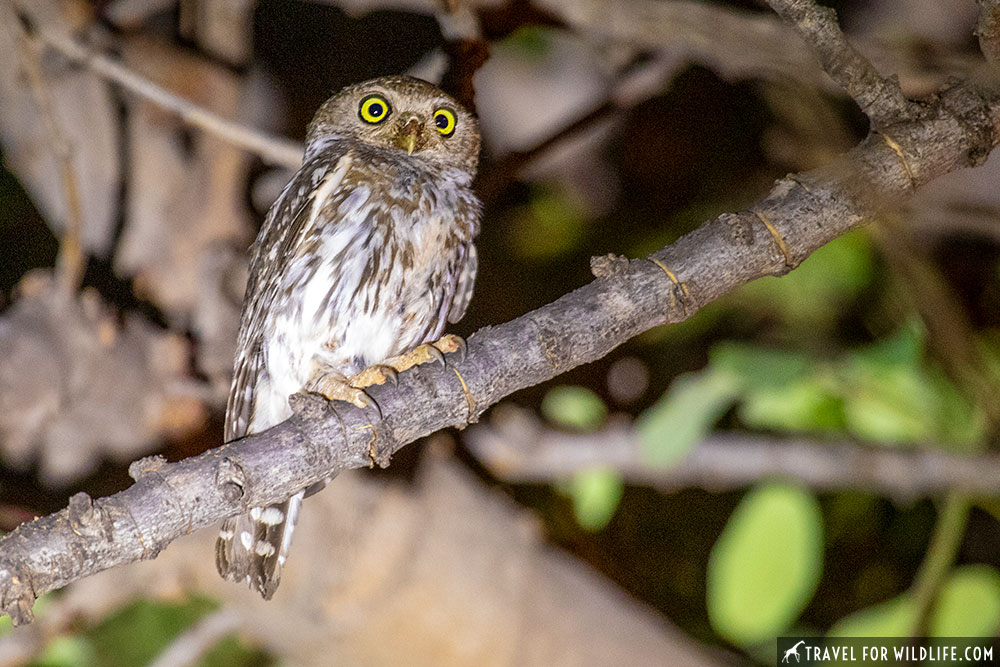
The Pearl-spotted Owlet (Glaucidium perlatum) is one of the smallest African owls. As the name suggests it has small pearly spots on its head, back, tail, and wings. Perhaps the most striking feature is the pair of “false eyes” on the back of the head. These two black spots make the Pearl-spotted Owlet seem as if it has eyes on the back of its head! This may be useful for deterring larger predators when she turns her head around backwards. (See the animated owl photo below.)
We’ve seen Pearl-spotted Owlets in the Kgalagadi Transfrontier park (below) and right above our table at the dining area of the Kalahari Anib Lodge in Namibia (above). Some refer to it as the Pearl Spotted Owl.
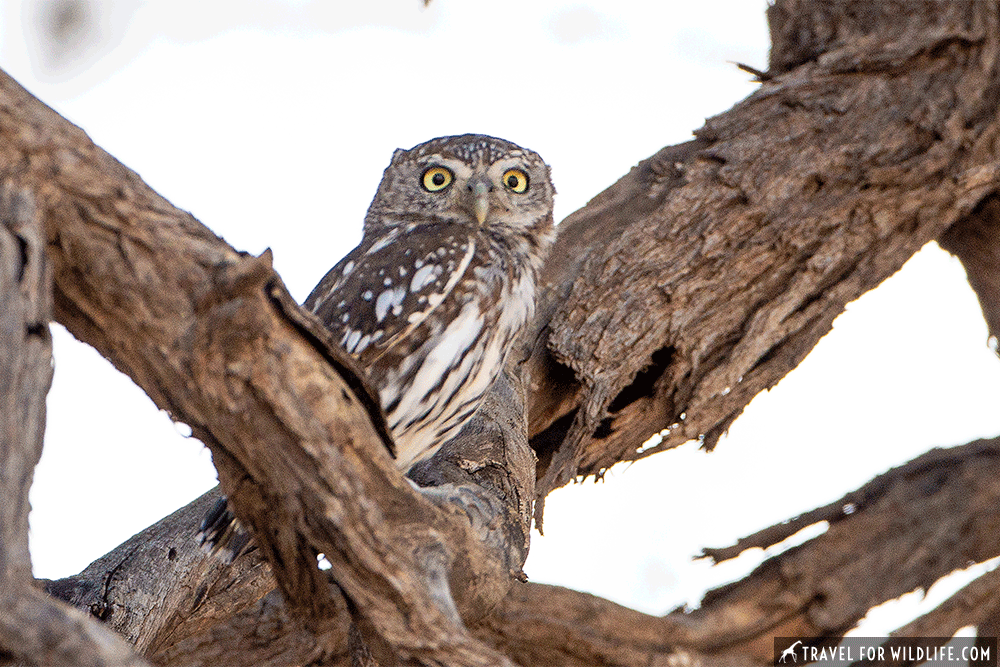
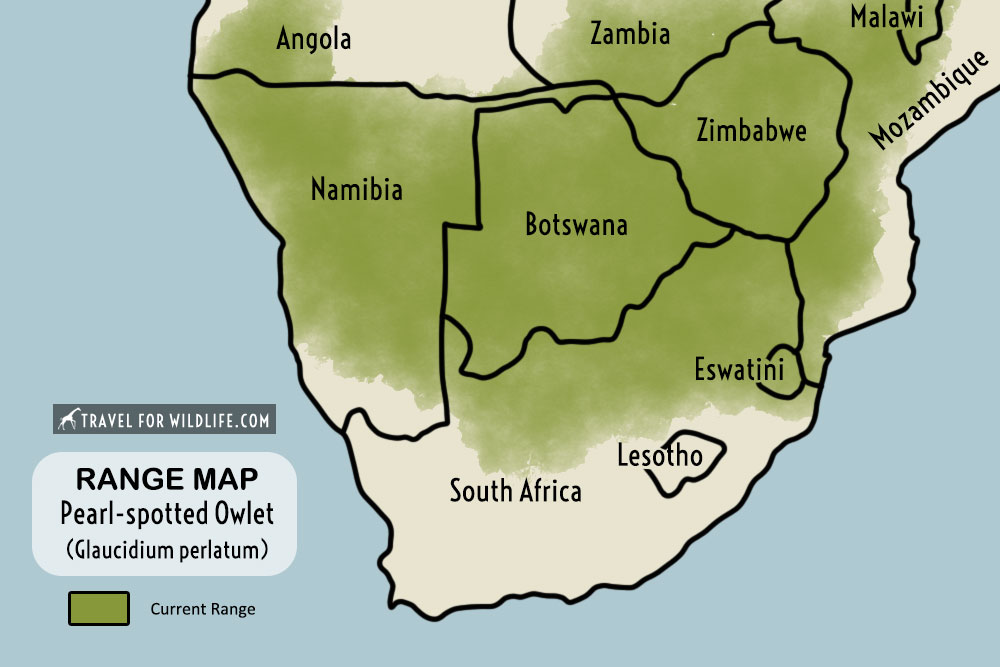
12) African Scops-owl: smallest of the African owls!
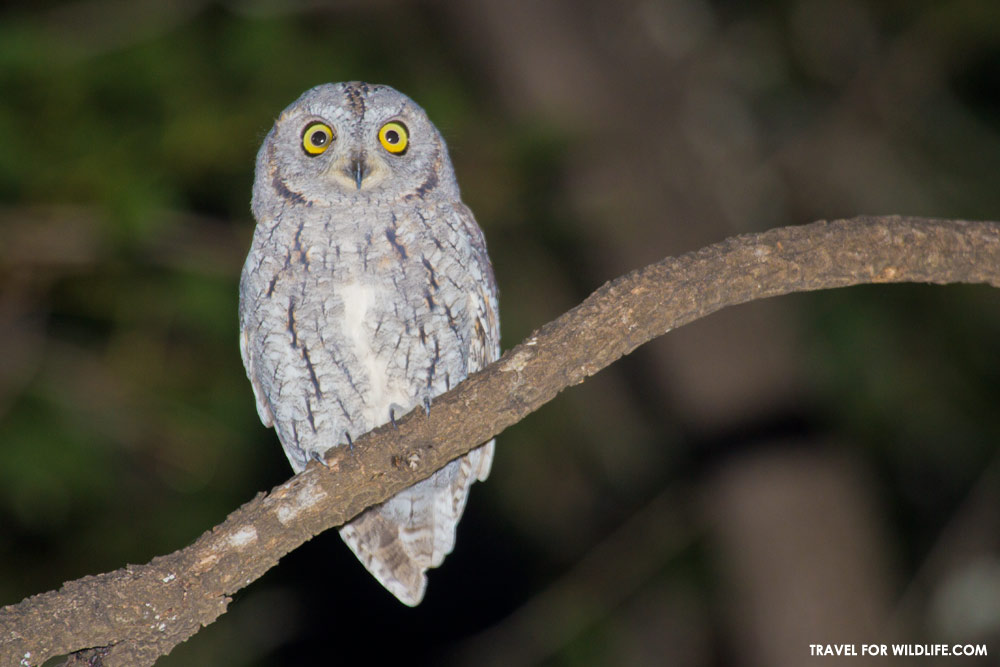
The African Scops-owl (Otus senegalensis) is the smallest owl in Southern Africa. It has ear tufts but sometimes lays them down flat as in the photo above. We heard this owl before we saw it, calling from above our tent in Kruger National Park. It’s a clear, single note that could be interpreted as sounding a little like “Scop”! We searched the tree and found this beautiful tiny African Scops Owl.
This is my personal number one in the cute owls competition. We saw another one, right at head height, sound asleep in a dense tree just behind the Satara Camp restaurant in Kruger (see photo below.) In this image you can just barely see the ear tufts. Pretty adorable right?
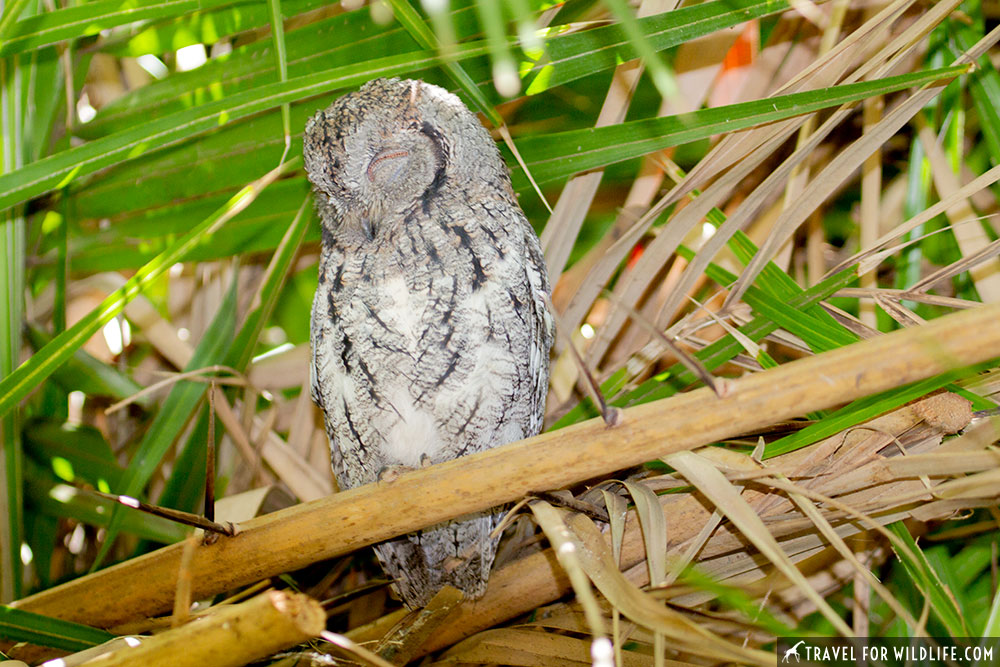
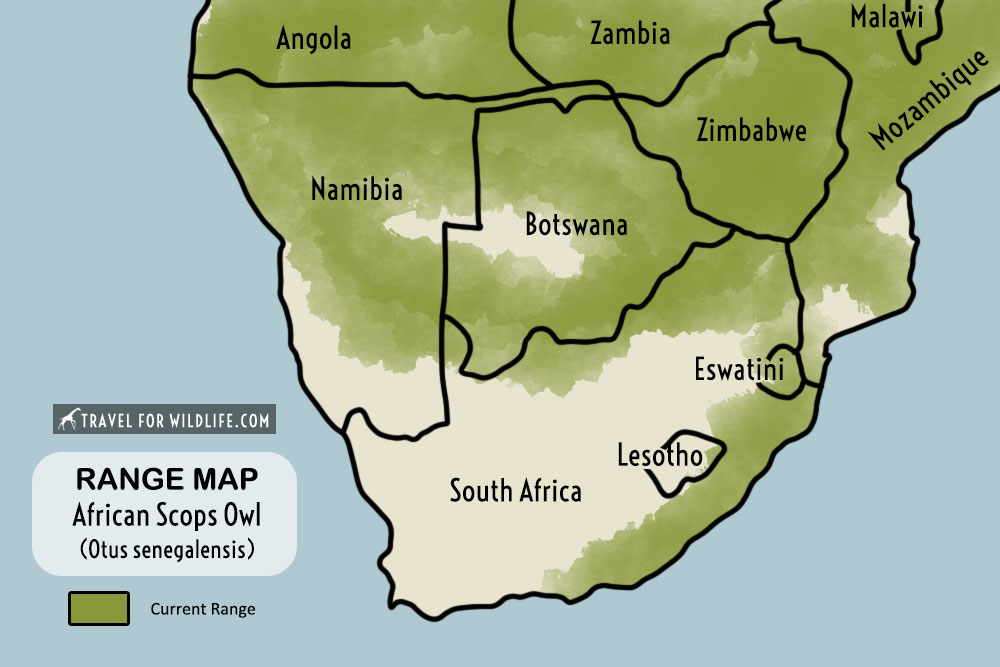
Have you seen any African owls? Any of the ones we haven’t seen? Tell us about your encounter in the comments!
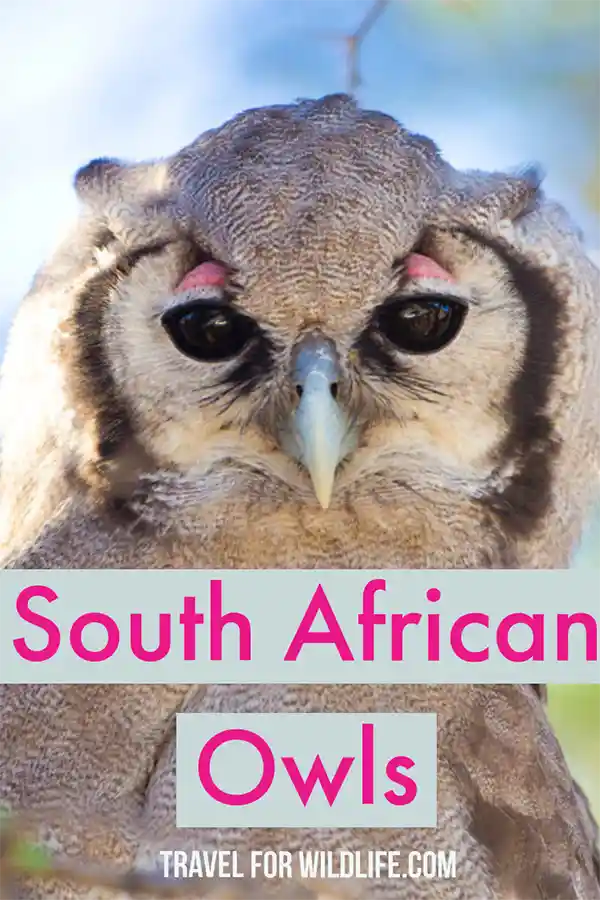

Hal Brindley
Brindley is an American conservation biologist, wildlife photographer, filmmaker, writer, and illustrator living in Asheville, NC. He studied black-footed cats in Namibia for his master’s research, has traveled to all seven continents, and loves native plant gardening. See more of his work at Travel for Wildlife, Truly Wild, Our Wild Yard, & Naturalist Studio.
